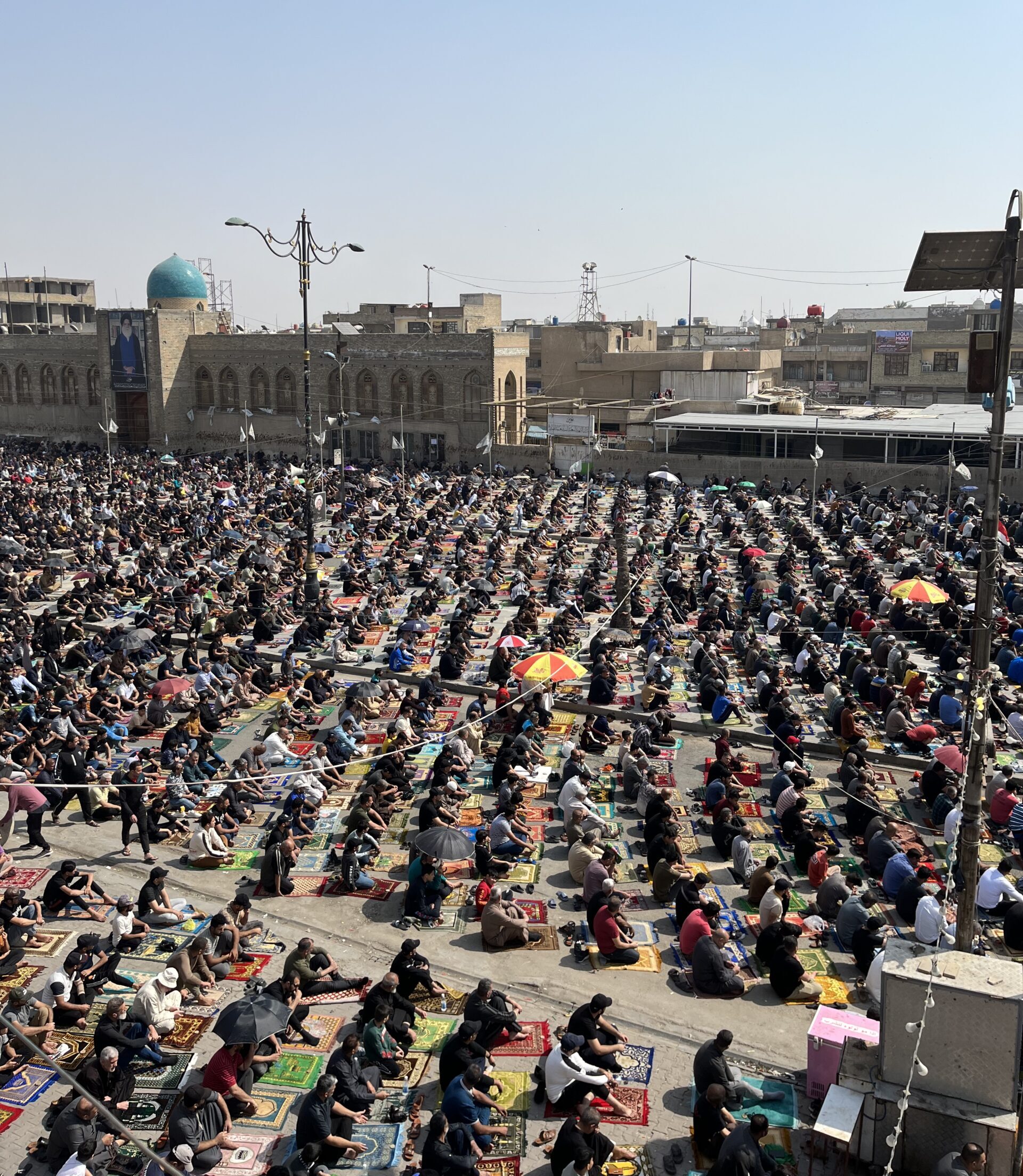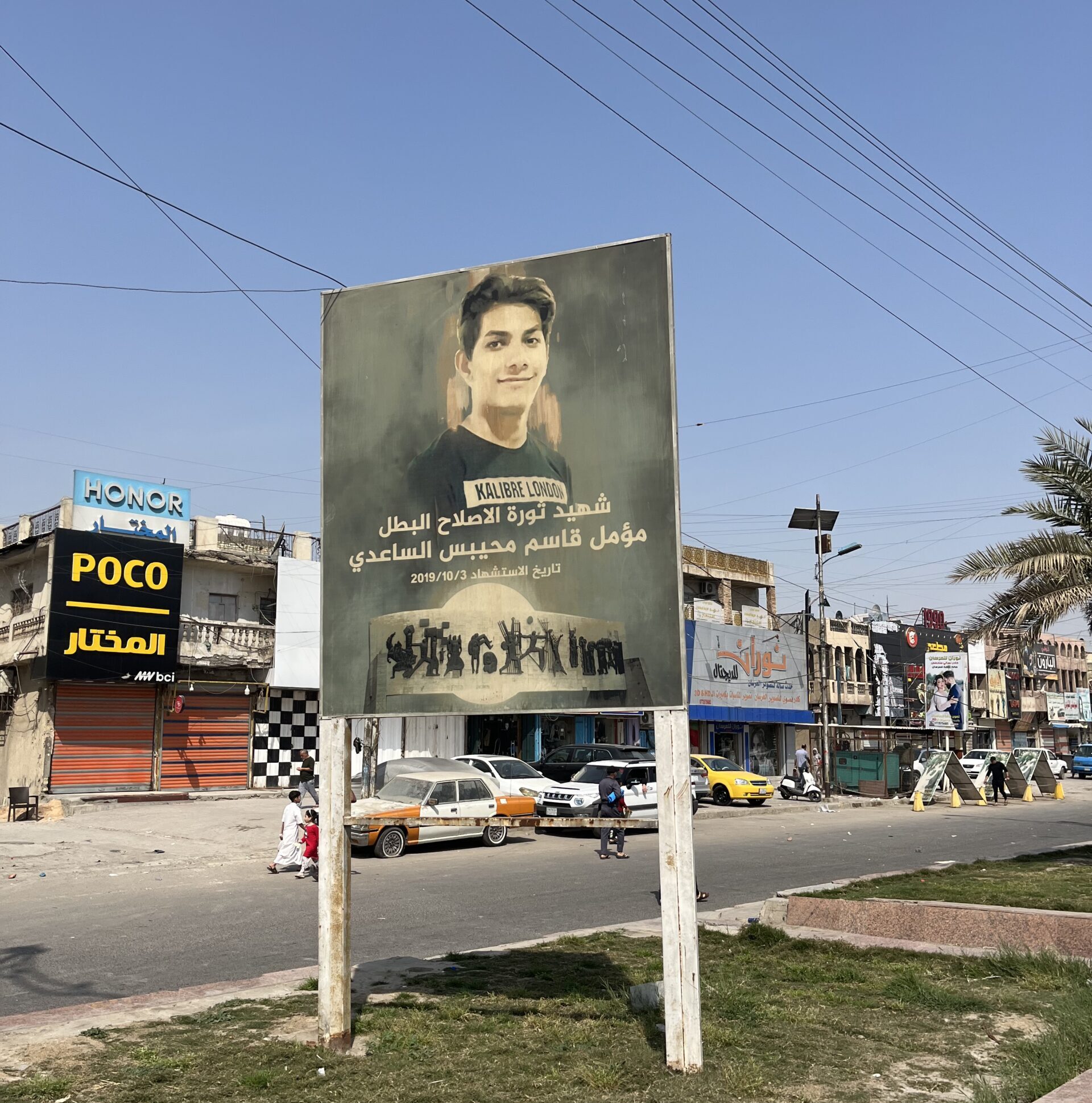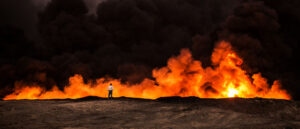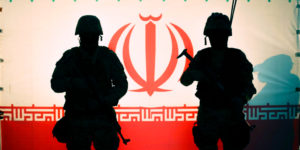Baghdad. Winter is almost over. Traces of Saddam Hussain still litter the city. There is so much chaos, you’d think the Western coalition had never tried to rebuild the place. And, after all these years, it wouldn’t feel strange to meet a Bradley Fighting Vehicle, 21-feet-long, rumbling down Al Rashid Street.
Baghdad was strafed by violence, and then lavished with colossal, almost surreal, amounts of foreign cash. The Americans spent $2 trillion on the war — a good chunk of it on efforts to rebuild the country they had helped to destroy. It was, like many things the US does, almost uncontrollable. Billions in shrink-wrapped $100 bills flowed into the country, and back out again into foreign bank accounts. It was the biggest transfer of cash in the history of the Federal Reserve. In the year after the 2003 invasion, almost 281 million notes, weighing 363 tonnes, were sent from New York to Baghdad.
Is Iraq now the functioning democracy of Washington’s dreams, or a sectarian dystopia? Twenty years on, was it worth it?
“Long live Bush! Long live Bush!” My fixer Ammar is reminiscing about the first days of the invasion as we drive through the city centre. “That’s what we were chanting. The Americans were coming; the Baathists were running. I was on the roof of my house, and we saw Apaches flying around. Then the American soldiers entered the city. They were covered in mud; their faces all painted black. Then the armoured vehicles came. Those soldiers were spotless.”
Ammar is one of the many Shia Iraqis who initially viewed the war as a liberation from Saddam Hussein’s sadism. Saddam was Sunni, but also a Baathist, an avowedly secular political philosophy influenced by Arab nationalism and Marxism. He lived in perennial fear of Iraq’s Shia majority, not least the Dawa Party, a Shia Islamist group that emerged in 1960. Devoted to turning Iraq into an Islamist state, it tried to assassinate Saddam in 1982, his would-be killers emerging from the cover of a date palm orchard in the city of Dujail. Saddam had two of its early leaders, Muhammad Baqir al-Sadr and Muhammad-Sadiq al-Sadr killed. (Saddam allegedly hammered an iron nail into the head of the former.)
We pass one of Saddam’s palaces. Every remaining pillar for 50 metres has his initials engraved into it, Ammar tells me. “He made himself everywhere,” he adds, before pointing to another fortified wall. “David, look! That’s the Green Zone.” If Baghdad is a city of chaos, it’s also a city of walls. Once they encased a tyrant; now they protect the hordes of diplomats, journalists and NGO workers, who comprise the tip of today’s Western spear into this country.
There’s a mural by the side of the road. “Stop killing; we deserve life; where are you UN?” it reads with the image of a bullet flying through it. Ammar remembers the violence. “We got so used to the bombs that, after a while, we could clean up everything after an attack — including the bodies — in one hour.
“At first, I was disappointed with Iraqis for fighting the Americans. I thought they were forgetting our debt: if the Americans hadn’t taken out Saddam, we would have lived under his dictatorship for 1,000 years. I thought the Americans just needed time to make huge changes in the country.” But then Ammar started working for the US Army as a translator. “Everyone was always coming to me with their problems, asking me about electricity, water, jobs — simple things — and I realised they didn’t have a plan. Even when violence against them was from just a few people, they took it out on everyone. They shot at me with water cannons just for approaching their car. They were savage.”
George W. Bush went into Iraq declaring he would take out a tyrant and replace him with a liberal democracy. Five weeks after the invasion, the president declared the mission accomplished. “In the battle for Iraq, the United States and her allies have prevailed,” he announced from the USS Abraham Lincoln. American forces captured Saddam later that year. Everything seemed rosy. But in truth, the problems were just beginning.
The road into Sadr City is lined with the posters of martyrs. They are all so young: young men who should have spent their youth playing video games, not dying in the street. Sadr City is a Baghdad suburb that was built to house the poor. Originally called Al-Thawr (Revolution City), it was renamed Saddam City in 1982 and then unofficially renamed Sadr City, after the martyred Sadiq al-Sadr. Today, it is the base of his son Muqtada al-Sadr, a thorn in the side of the Americans from the moment they arrived.
I am here for Friday prayers. All around are children playing in the streets. A few kick a dirty football around, their replica shirts bearing the names of famous Muslim players: Mo Salah and Karim Benzema are the most popular.
Friday prayers have a special place in the Muslim world — especially for the Shia of Iraq, who have traditionally used them to voice dissent. It was largely because of their sermons during Friday prayers that Sadeq and Baqir Sadr were killed. Today, more than a thousand people are praying in the street. Flags and banners stretch almost to the horizon. The images of the Shia Imams Huseyn and Ali are everywhere. “Muqtada!” demand the crowd. Muqtada, however, is not here today, but back home in the holy Shia city of Najaf. His replacement is giving a speech centred on the environment. “Iraq has become a desert under the rule of the former regime,” he intones. “It is time to plant more trees.”

Sadr City is key to the story of post-invasion Iraq. Just two months after the Americans overthrew Saddam in July, they set up a governing council to rule the country until proper elections — the first in the nation’s history — could be held the following year. Among the council’s leaders were members of Dawa. The party had been responsible for terror attacks against US targets in the Eighties, but after Saddam became public enemy number one following his 1991 invasion of Kuwait, Washington brought it in from the cold. But Dawa had no time for the US vision of a rainbow nation. Instead, it used the parliament to achieve its own vision of a Shia-dominated Iraq.
One person, though, was left out. On orders from the US, Muqtada was barred from the governing council. Washington viewed him as a loose cannon. But it didn’t count on his ambition. If Muqtada couldn’t rule through the ballot, he would do so through the bullet.
He got to work quickly. Sadrist forces already controlled most of Baghdad’s mosques and, just weeks after the invasion, they set about seizing the schools and hospitals, as well as opening local Sharia law courts and “punishment” committees. Muqtada wanted to expel the Americans from the start, and made his views known publicly. Then, after Washington responded by shutting down his newspaper, he founded the Mahdi Army. Its goal: to drive US forces out of Iraq. Once that was achieved, he would take his rightful seat at the new table of Iraq’s government. As Iraq imploded into bedlam, hatred of Washington became increasingly popular; his message found a growing audience.
In a hotel in central Baghdad, I meet Abu Fatima, also known as Al Jariyah (the wounded), a former soldier in the Mahdi Army, a large man with a large belly and wounds across his face. He joined up soon after Muqtada sent out the call, and fought US forces in the August 2004 Battle of Najaf. Abu Fatima was wanted by the Americans and spent four years on the run in Syria and Iran.
“The Americans said they were liberators,” he tells me, “but we were sure they were occupiers. We started as peaceful protestors in 2004, and when Muqtada said the occupiers had to leave, we joined him in Najaf. Then they closed the newspaper, and they issued an arrest warrant against him. Then they tried to raid the holy shrine — and the conflict began. I was 18 at the time. We had Kalashnikovs and RPGs, while they were using planes and tanks. But still we managed to push them back.”
The story is taken up by Mortava Al-Musavi, the spokesman of the military wing of the Sadr organisation. Dressed in a black suit (the Shia’s favoured colour), he recalls his own time fighting. “We never had any support from anyone. We made IEDs and used them against Abrams tanks. Many of us went out to fight believing we would not return. We used to sleep inside the graves with the dead. I remember a comment from a US general, who said: ‘We are fighting ghosts.’”
I ask him what he thinks of Iraq today. “Twenty years on, we have proved that we will not accept any occupiers trampling on us. We believe that only Iraqis can rule themselves. And this is what Muqtada is putting into practice. If only Iraq stops implementing a foreign agenda, it will become a stable country. I don’t want to be pessimistic; I hope things will get better.”
“A foreign agenda.” It is impossible to spend any time in post-invasion Iraq without hearing these words. And they generally mean one thing: Iran. When the Americans removed Saddam, they empowered not only Iraq’s Shia, but its neighbour, the world’s most powerful Shia state. As soon as Saddam fell, Iranian money and influence, and indeed weapons, started pouring into Iraq. Not only did Iran help set up several militias in the country, but many of members of Dawa who fled Iraq under Saddam went into exile in Iran. Nouri Al Maliki, Prime Minister of Iraq from 2006-2014, and who many blame for a range of viciously anti-Sunni policies, was a Dawa member who spent eight years in Tehran.
Muqtada, though, has always — publicly at least — rejected Tehran and campaigned against Iranian influence in Iraq (though he spent 2007-2011 in Iran on the run from a US arrest warrant). It may have cost him. In the 2021 Iraqi elections, the Sadrist Movement gained the most seats in parliament, but couldn’t form a government: among other things, the Iran-backed Fatah coalition wouldn’t countenance a Sadr-led government and negotiations stalled for over a year.

Over tea that evening, Fattah Al-Sheikh, a former MP close to the Sadrist movement, explains what lies behind this stasis. “Too many politicians are pro-Iran or they are scared of it. They are subject to the Velayat-e faqih [Iran’s ruling theological-political doctrine] while having to deal with western countries. One day they must implement the agenda of a country that attacks the Green Zone and sends rockets into Erbil; the next they are trying to meet the US ambassador. They are lost.”
He continues: “You cannot claim to be democratic on one hand and hold a weapon in the other. You cannot be a democratic country when you are part of the government that is smuggling cash to another country. We have armed militia groups who put rifles to people’s heads when they go to vote.”
Twenty years on, Al-Sheikh is keen to be, as he calls it, “fair”. Without US intervention, he concedes, Iraqis would never have been liberated from the former regime, but the job is unfinished. “They need to be serious about building a proper democratic process here. They are responsible for keeping it safe while holding all groups, including the Iran-backed Shia militias, to account. We can kick them out of Baghdad and back to Iran if the international community helps us to establish a national project to serve Iraq… If they do that, we can finally say the US has succeeded in its project in Iraq.”
Success is a long way off. Throughout the city, there are posters and murals commemorating the Iranian Quds force commander Qasem Soleimani. In one market, you can buy a pendant of pro-Iran Shia militia leader, Abu Mahdi al-Muhandis, who was killed alongside Soleimani in a 2020 US drone strike.
Baghdad. The name still echoes in the imagination of both East and West. Shock and Awe. Old and New. The city is filled with scenes from ancient history and modern tragedy. Near the market, Ammar points out the site of a suicide bombing that killed hundreds. One day, we visit a coffee shop; near the entrance, a poster of the owner’s brother, martyred in another suicide bombing just outside, is pinned to a tree. Twenty years on from the 2003 invasion, the history of modern Iraq is still written into the cityscape of its capital.
As we drive out of central Baghdad, Ammar tells me: “This used to have so many bombs on it the Americans called it the Irish Road. Now it’s named after Muhandis.” I ask him about it all, after so many years. “We had so much hope in the beginning,” he replies. “Then the country turned to a path of blood, and then people started to want Saddam back to keep order. Even with all the misery he brought, you’d be taken quietly away. We didn’t see all this blood in the streets.”
Disclaimer
Some of the posts we share are controversial and we do not necessarily agree with them in the whole extend. Sometimes we agree with the content or part of it but we do not agree with the narration or language. Nevertheless we find them somehow interesting, valuable and/or informative or we share them, because we strongly believe in freedom of speech, free press and journalism. We strongly encourage you to have a critical approach to all the content, do your own research and analysis to build your own opinion.
We would be glad to have your feedback.
Source: UnHerd Read the original article here: https://unherd.com/



